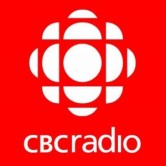Today I had the pleasure of interviewing Agneta Dolman, a local artist, for the McIntosh Gallery‘s “A Driving Force” Project. The purpose of the project is to interview notable women in the art community, both as an oral history project and also to create video profiles for the gallery’s website.
It actually was a pleasure to finally do the interview, which is surprising for me. I was pretty nervous going into it because I didn’t like the idea of being awkward on camera, but it really wasn’t about me at all – I was just the question facilitator. Agneta did a great job answering my questions. So good, in fact, that I didn’t know how to transition between questions because she did such a great job answering I was just thinking, “wow, okay, that was perfect, on to the next one.”

Agneta in her studio – Courtesy of agnetadolman.com
I first met Agneta last week for a “pre-interview,” and I knew I had chosen a good interviewee. She is a woman with a lot of reflections and opinions, and she was really looking forward to telling her story. Something unique about her is that she was born in Sweden and immigrated to Canada as an adult. She’s maintained close ties to her homeland. Because of this, she had an interesting perspective to give on what it means to be an immigrant (especially in a pretty insular art community in Southwestern Ontario), both back in the 1970s when she first moved here, and what it means today.
The solo exhibition that she put on at the McIntosh Gallery about 10 years ago now was called “Our Home and Native Land.” It contained a range of art, including paintings of altered Canadian flags, imagery from the national anthem, and textiles representing immigrant culture, specifically for women. It brought forth the confusing ideas of immigration to Canada – being “hyphenated,” as she might say. It made me think about that line in the Canadian anthem. Is this really most people’s “native land”?
Canada is a land of immigrants. I’m sure some would argue that the only people this land is “native” for are indigenous peoples. Or do you just have to be born in Canada for it to be your native land? Does that mean Canada is my native land, but it’s not my parents’ because technically neither of them were born here? It seems like the national anthem doesn’t make sense for a pretty big proportion of the population – at last count, about 20% of Canada’s population is foreign-born.

Personally, I’m convinced I’m not Canadian enough because I didn’t grow up listening to the CBC.
Now, I’m not saying that I’m going to start a campaign to have the words of the national anthem changed, but it’s something to consider. It’s also relevant to public historians, as we need to realize the audience that we are dealing with. A fifth of Canadians may have very little knowledge of Canadian heritage, or may feel like outsiders in its history. It’s up to public historians to make history relevant and engaging for a huge variety of people, not just those who can trace their Canadian heritage back for generations.